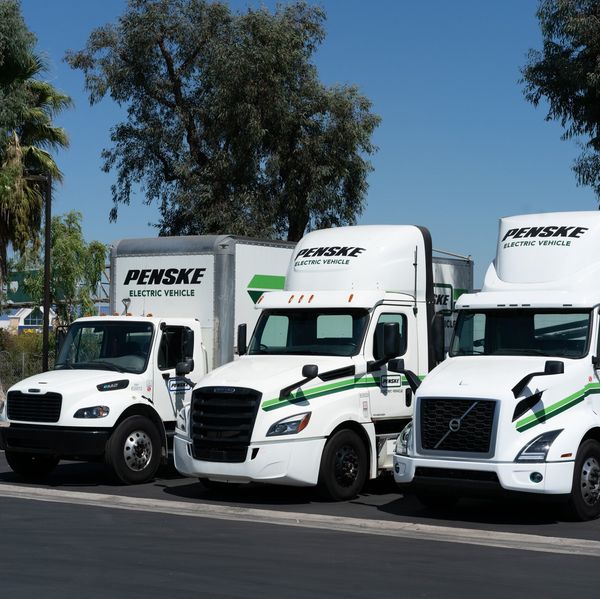Federal and State Governments Continue To Focus on Emission Reduction

Reducing emissions is a top priority among federal and state lawmakers, and the U.S. Department of Transportation has announced a new deadline — Feb. 1 — for state departments of transportation to establish transportation-related emission-reduction goals.
The federal government has also announced more than $27 billion in federal funding to help states reach their targets, including $5 billion to build out an electric vehicle charging network, $2.5 billion to deploy electric vehicle charging and hydrogen, propane and natural gas fueling infrastructure, and $400 million to reduce truck idling and emissions at ports.
The new requirements and funding are among several regulatory initiatives designed to improve sustainability, which is also taking on greater importance as customer, consumer and investor interest in companies’ environmental, social and governance (ESG) goals increases.
Fleets can reduce emissions in several ways, including turning to late-model equipment, deploying electric vehicles and using renewable diesel fuel.
Late-Model Equipment: Late-model equipment with significant fuel economy improvements, reducing emissions. The North American Council for Freight Efficiency’s 2022 Annual Fleet Fuel Study found that fuel efficiency for all heavy-duty Class 8 combination vehicles went from 5.97 to 6.24 mpg during the last three years.
Vehicle Selection: Spec’ing the right vehicle for the application improves efficiency and fuel economy while also reducing operating costs and the risk of mechanical failures. Different fleets have different needs, and a cross-country vehicle, for example, is spec’ed very differently than a tractor used in regional applications.
Aerodynamic Devices: Installing EPA-verified aerodynamic devices on tractors and trailers can save fuel by minimizing aerodynamic drag and maintaining smoother airflow. Technologies include side skirts (a pair of panels affixed to the lower side edges of a trailer) and trailer tails, both of which reduce drag.
Auxiliary Power Units: Auxiliary power units (APUs) reduce the need for idling, allowing fleets to reduce fuel costs, increase engine life and improve driver comfort. Fleets can choose either an electric APU that runs on batteries or a diesel-powered APU that runs on a small diesel engine that burns a small amount of fuel per hour. APUs could range from $8,500 to $12,500, but that cost is recouped in fuel savings over about two and a half years.
Preventive Maintenance: Preventive maintenance helps keep the tractor operating at peak performance, which has a direct impact on fuel economy. The North American Council for Freight Efficiency reported that fleets can achieve fuel savings between 5% and 10% through preventive maintenance.
Electric Vehicle Solutions: Penske has built and operates North America’s first heavy-duty EV charging network, and there are multiple paths to EV adoption. These include Class 8 trucks and light- and medium-duty equipment. Penske Truck Leasing offerings include the Freightliner eCascadia (class 8), Freightliner eM2 (class 6 and 7), Volvo VNR electric tractor (class 8), International® eMV™ (class 6 and 7), Ford E-Transit (Class 2), Orange EV e-Triever electric terminal truck (class 8 yard tractor), Freightliner Custom Chassis MT50e walk-in (class 5 and 6), and XOS walk-in (class 6).
Renewable Diesel Fuel: Renewable diesel fuel is a cleaner option that performs identically to ultra low sulfur diesel (ULSD) but has a well-to-wheel differential of 60% to 90%+ in greenhouse gas. Renewable diesel reduces particulate matter by more than 40%, carbon monoxide by more than 25%, total hydrocarbons by more than 20%, NOx by 10%, and lifecycle GHG emissions by up to 90%. Penske offers renewable diesel fuel at several locations on the West Coast.
Fleets are increasingly expected to be able to quantify their emission reduction efforts. Penske Truck Leasing has solutions, including an emissions calculator, to help fleets calculate savings and track results. Associates will also work with fleets to find the ideal equipment for their needs and test new technologies.
